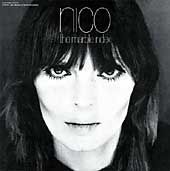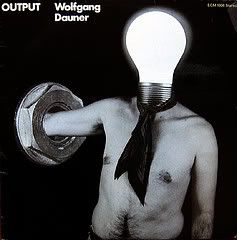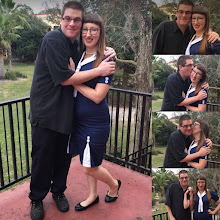Seeland, 1980; out of print**, but a mass-produced version is supposedly on the way
20 untitled tracks, 36:47
Nowadays known for their masterful satire of mass media and pop culture, Negativland began as a much different prospect. For their debut album, Negativland was Mark Hosler, Richard Lyons (both of whom were 17 when this was recorded!), and David Wills; the liners inform you that "occasionally you will hear the talents of" Peter Dayton, W. Kennedy M., and Joan. The instruments range from synths, organs, viola, guitars, tape loops, and the mysterious "Booper". While definitely primitive compared to their later work, the debut album is quite incredible on its own merits. A majority of the tracks are bizarre sound collages, featuring everything from household appliances and electronic birdcalls to the ambient sounds of televisions and radios. A few tracks do break from the "norm": a mournful acoustic guitar ditty here, a relatively traditional new wave tune there, and then there's one track with jittery rhythms and blips accompanying such random observations as "Play.... Black Sabbath....at seventy.... eight!". The sound collages, however, are the main draw, sounding like the bastard offspring of LUMPY GRAVY, THE FAUST TAPES, and early industrial a la Cabaret Voltaire or Nurse With Wound. It's not really musical by any stretch, but then does it need to be? Most fans tend to sell this album short; admittedly, it's an acquired taste, but give it a chance and it should grow on you. Their next two albums, POINTS and A BIG 10-8 PLACE, follow along a similar path, with fourth album ESCAPE FROM NOISE being considered the beginning of the satirical sound that Negativland is known for. I personally prefer the early work, since it's much less preachy and more about the genuine joy of having a twisted musical vision and the equipment to express said vision (but you should still hear their other albums if you haven't already; they truly are impressive). Negativland themselves are promising a reissue of the debut; while it won't have the unique covers, the "music" within still justifies the purchase.
*The packaging for this is truly great. The box itself is a thick cardboard box, like old reel-to-reel tapes came in. My copy's cover is a black and white photo of a guy brushing his teeth, pasted over a square of black construction paper. On the back is a piece of wallpaper, under which is a red sticker with the band's name, the catalog number,copyright information, and a hand-written "serial number" identifying which copy is yours (mine happens to be #1622). Inside, along with the CD, there are four inserts and a pin. One is simply a recipe for a coffee torte, another is a transcription of a bizarre food-oriented dialogue. The others have the credits for the album and a modified picture of a guy in pajamas whose arms reach nearly to the ground. Much like the album itself, the package is random but intriguing.
**Apparently limited to 9500 LPs and 4500 CDs




